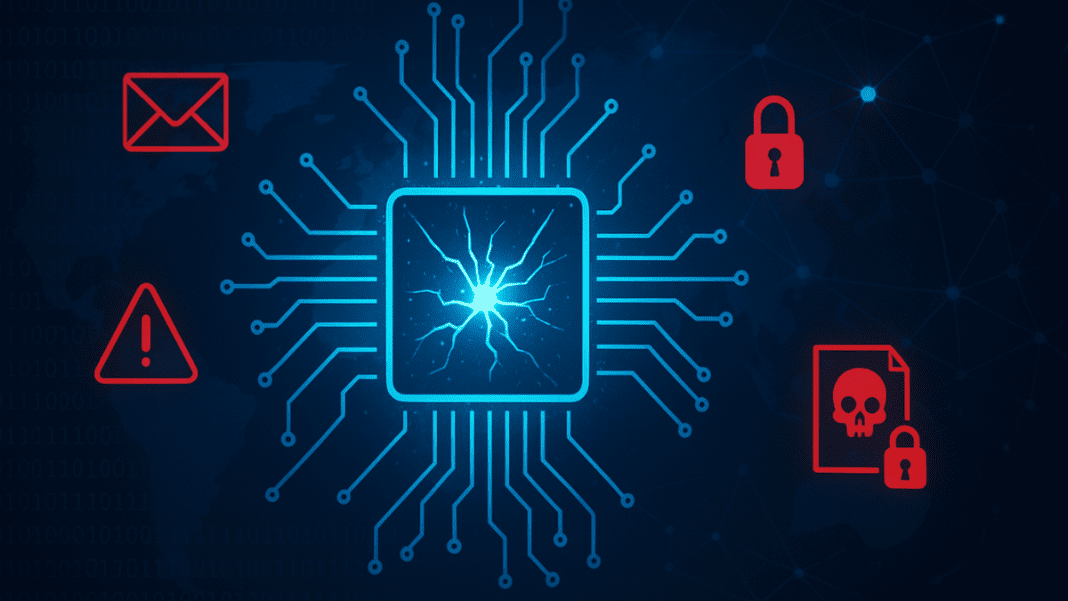The world’s most powerful technology, semiconductors, is now caught in the middle of a growing cyber war. New intelligence shows that attacks on the global chip industry have exploded more than six times since 2022. Losses from ransomware alone have already crossed US$1.05 billion since 2018, making it clear that the threat is no longer random. It is now a coordinated campaign that mixes espionage, sabotage, and artificial intelligence (AI).
The New Face of Cyberattacks on Chips
A new report explains how attackers have shifted their focus in the past few years. Earlier, hackers mostly tried to steal company data such as bid documents or secret designs. But today, they are going deeper. They are disrupting production and even targeting the tools used to design and test chips.
This shift is dangerous because a single disruption in the supply chain can cause huge problems. In semiconductor plants, even one machine standing idle for a few days can lead to delays that affect deliveries for months. Such delays can hurt company earnings, slow down product launches, and even impact global supply of electronics.
The US$1.05 billion loss figure includes ransom payments, downtime, and recovery costs. Experts note that these are material losses in an industry where margins depend on non-stop manufacturing.
Another worrying trend is how attackers get into the system. More than 60% of breaches in chip factories start not in the factory itself but in the IT networks. Hackers use stolen VPN credentials, phishing emails aimed at design engineers, or weakly configured interfaces. Once inside, they move from IT to operational technology (OT) — the machines that power fabs and packaging units.
This pathway is perfectly suited to semiconductor companies, which depend on a mix of highly connected design software and deeply specialized hardware. That mix creates both opportunity and risk.
How Artificial Intelligence Raises the Stakes
AI has become a double-edged sword. On one hand, AI helps chipmakers design faster and better products. On the other hand, attackers are now using AI to strike back.
One major concern is that AI can help hackers insert hidden flaws into a chip’s blueprint. These flaws may not be noticed during testing. They could remain silent for years before being activated. That means chips shipped around the world could carry invisible risks buried deep inside them.
Cyberattack Catastrophe: How Hackers Can Endanger Human Lives ?
This is especially risky because the chip industry is globally outsourced. A single chip might be designed in one country, tested in another, and manufactured in yet another. That long chain of handovers creates multiple points where attackers can slip in. With AI tools in play, the odds of inserting undetected backdoors increase dramatically.
Such risks highlight how the very technology that powers AI can be turned against the industry itself. For a sector already strained by rising demand and geopolitical competition, AI-driven cyber threats add a new layer of danger.
Geopolitics and the Supply Chain Under Fire
Geopolitics is making the cyber war on chips even more intense. Researchers point out that state-backed groups are actively targeting the semiconductor supply chain. One of the most targeted areas is Taiwan, a hub that produces the world’s most advanced chips. Phishing attacks and digital espionage campaigns against this region are on the rise.
Governments have repeatedly warned that semiconductor technology is now a matter of national strategy. Chips are not just components; they are critical assets for economic growth, defense, and technological leadership. This makes them prime targets for cyber sabotage.
How Cyber Attacks on Industrial Control Systems Can Endanger Lives ?
With new semiconductor plants being built in different parts of the world, including major economies, the risks are expected to spread. Each new site adds more contractors, suppliers, and digital connections. And with more connections come more opportunities for attackers to find weak links.
The semiconductor industry now finds itself in the middle of what some call a “silicon cold war.” AI, once a tool for growth, is also being weaponized against it. The battle over chips is no longer only about manufacturing capacity or innovation. It is also about securing the digital backbone that keeps the entire sector running.
